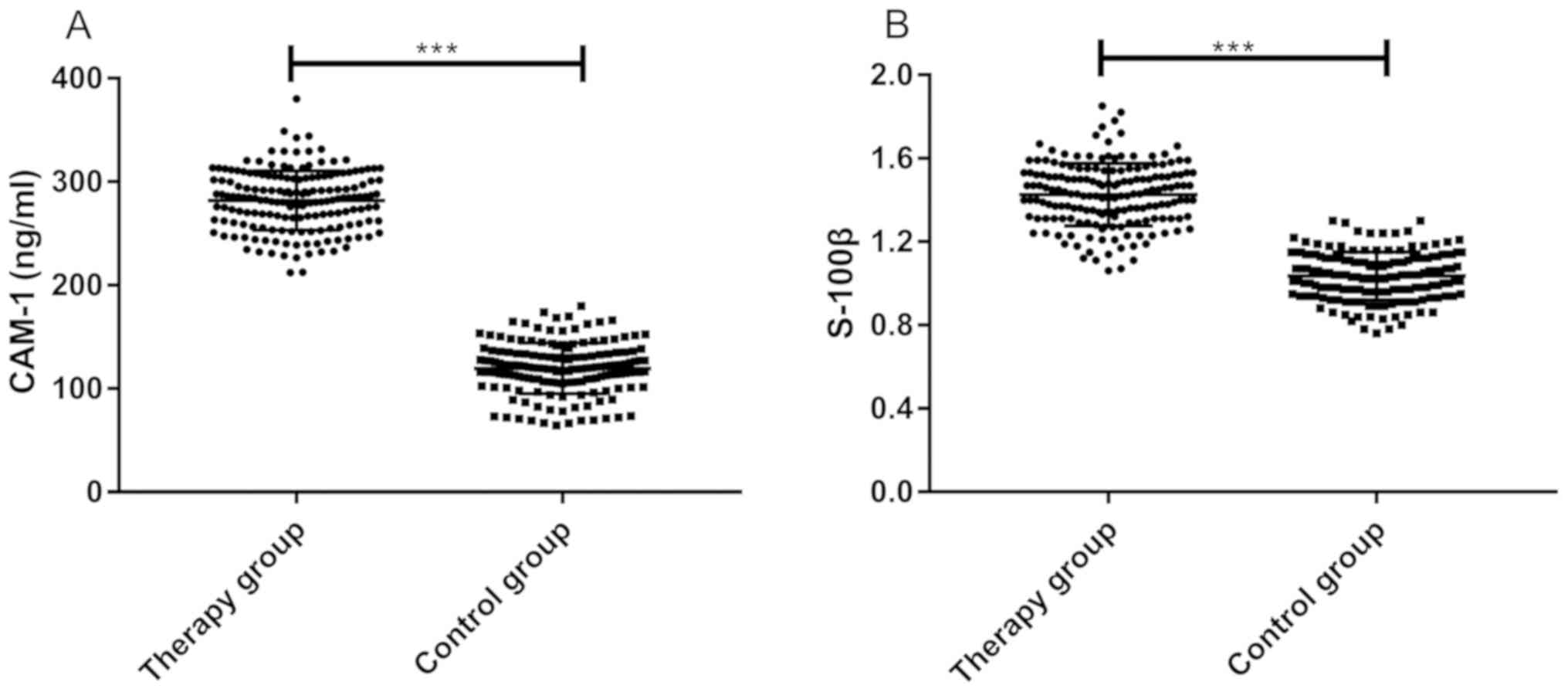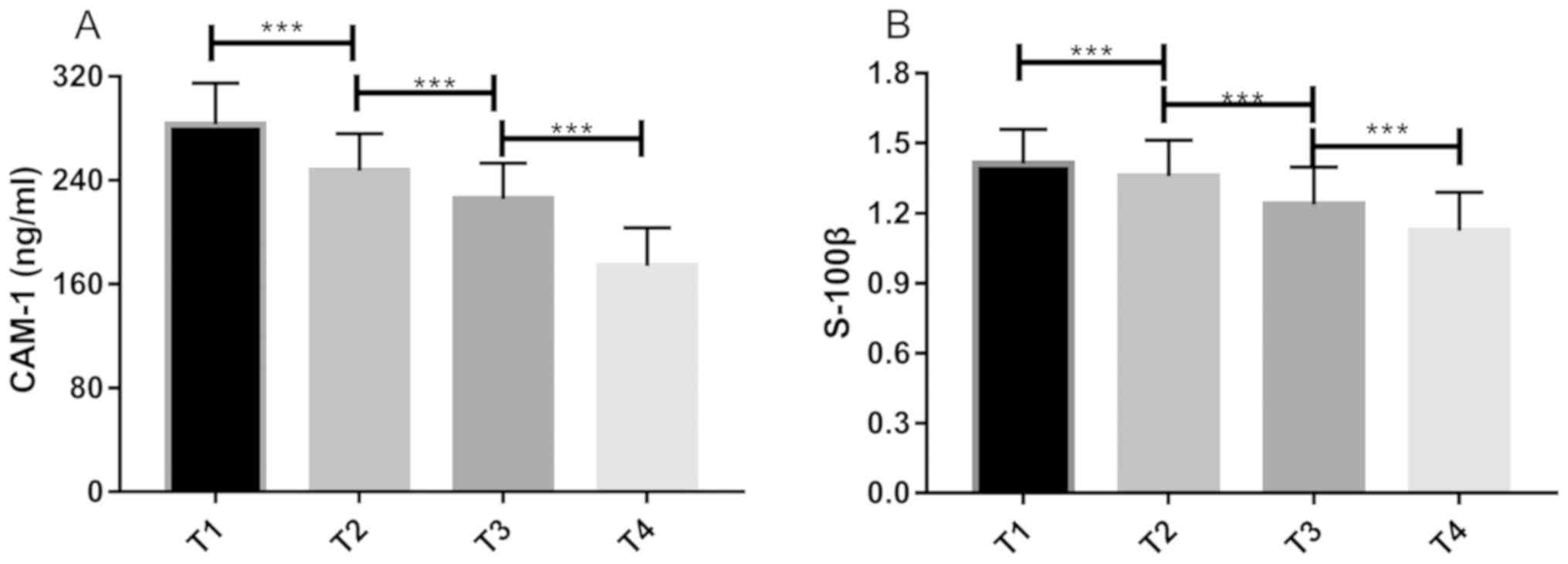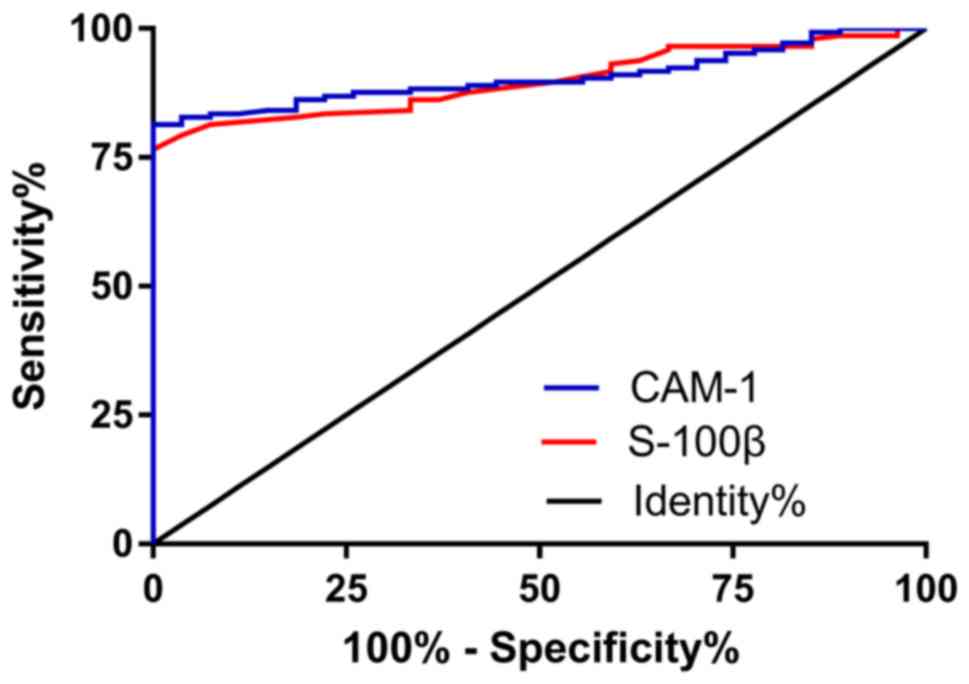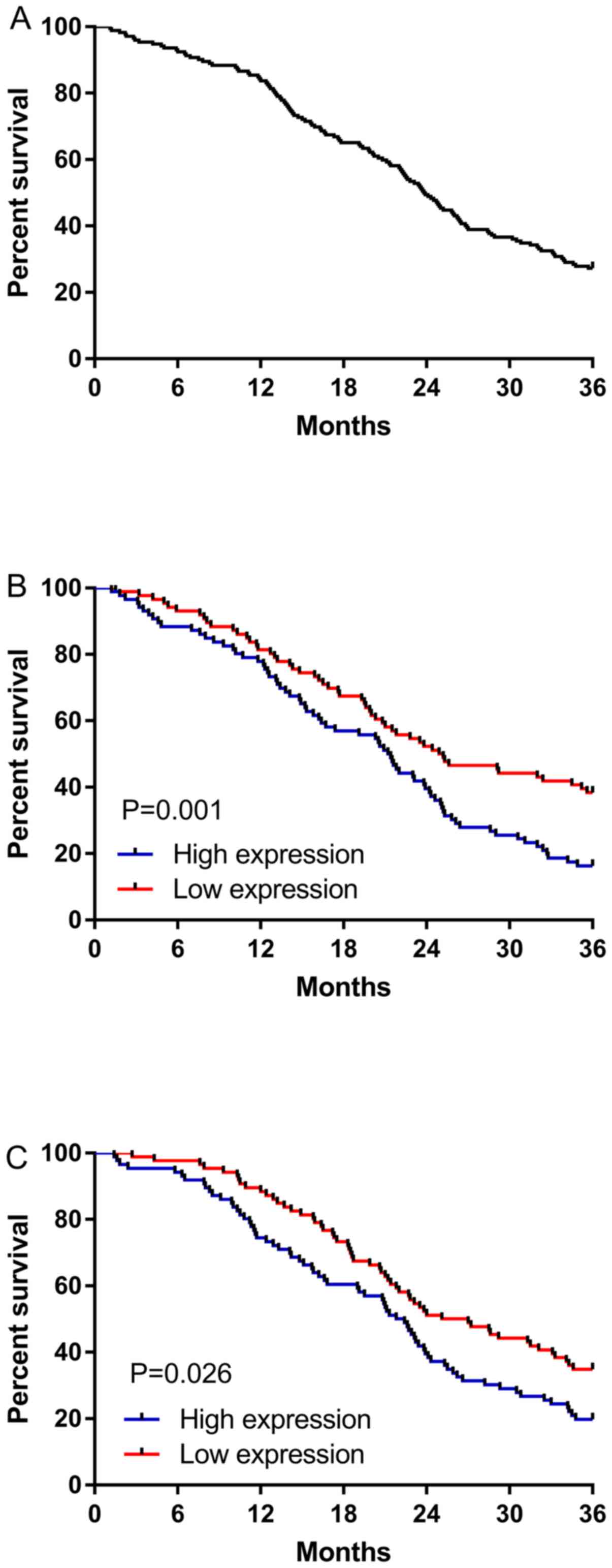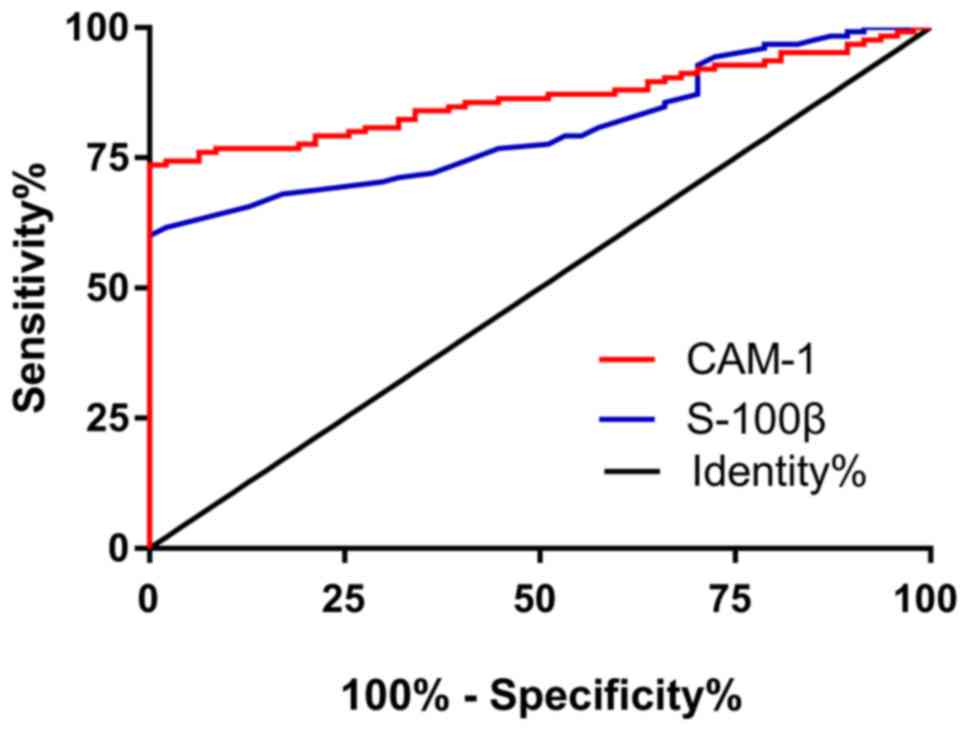|
1
|
Chen W, Zheng R, Baade PD, Zhang S, Zeng
H, Bray F, Jemal A, Yu XQ and He J: Cancer statistics in China,
2015. CA Cancer J Clin. 66:115–132. 2016. View Article : Google Scholar : PubMed/NCBI
|
|
2
|
Cheng TY, Cramb SM, Baade PD, Youlden DR,
Nwogu C and Reid ME: The international epidemiology of lung cancer:
Latest trends, disparities, and tumor characteristics. J Thorac
Oncol. 11:1653–1671. 2016. View Article : Google Scholar : PubMed/NCBI
|
|
3
|
Didkowska J, Wojciechowska U, Mańczuk M
and Łobaszewski J: Lung cancer epidemiology: Contemporary and
future challenges worldwide. Ann Transl Med. 4:1502016. View Article : Google Scholar : PubMed/NCBI
|
|
4
|
Oberg M, Jaakkola MS, Woodward A, Peruga A
and Prüss-Ustün A: Worldwide burden of disease from exposure to
second-hand smoke: A retrospective analysis of data from 192
countries. Lancet. 377:139–146. 2011. View Article : Google Scholar : PubMed/NCBI
|
|
5
|
Molina JR, Yang P, Cassivi SD, Schild SE
and Adjei AA: Non-small cell lung cancer: Epidemiology, risk
factors, treatment, and survivorship. Mayo Clin Proc. 83:584–594.
2008. View
Article : Google Scholar : PubMed/NCBI
|
|
6
|
Vansteenkiste J, De Ruysscher D, Eberhardt
WE, Lim E, Senan S, Felip E and Peters S; ESMO Guidelines Working
Group, : Early and locally advanced non-small-cell lung cancer
(NSCLC): ESMO Clinical Practice Guidelines for diagnosis, treatment
and follow-up. Ann Oncol. 24 (Suppl 6):vi89–vi98. 2013. View Article : Google Scholar : PubMed/NCBI
|
|
7
|
Kotteas EA, Gkiozos I, Tsagkouli S, Bastas
A, Ntanos I, Saif MW and Syrigos KN: Soluble ICAM-1 levels in
small-cell lung cancer: Prognostic value for survival and
predictive significance for response during chemotherapy. Med
Oncol. 30:6622013. View Article : Google Scholar : PubMed/NCBI
|
|
8
|
Zhao L, Liu L, Dong Z and Xiong J: miR-149
suppresses human non-small cell lung cancer growth and metastasis
by inhibiting the FOXM1/cyclin D1/MMP2 axis. Oncol Rep.
38:3522–3530. 2017.PubMed/NCBI
|
|
9
|
Neselius S, Brisby H, Theodorsson A,
Blennow K, Zetterberg H and Marcusson J: CSF-biomarkers in Olympic
boxing: Diagnosis and effects of repetitive head trauma. PLoS One.
7:e336062012. View Article : Google Scholar : PubMed/NCBI
|
|
10
|
Rivera MP, Mehta AC and Wahidi MM:
Establishing the diagnosis of lung cancer: Diagnosis and management
of lung cancer, 3rd ed: American College of Chest Physicians
evidence-based clinical practice guidelines. Chest. 143
(Suppl):e142S–e165S. 2013. View Article : Google Scholar : PubMed/NCBI
|
|
11
|
Xianbao L, Hong Z, Xu Z, Chunfang Z and
Dunjin C: Dexmedetomidine reduced cytokine release during
postpartum bleeding-induced multiple organ dysfunction syndrome in
rats. Mediators Inflamm. 2013:6278312013. View Article : Google Scholar : PubMed/NCBI
|
|
12
|
Qin B, Panickar KS and Anderson RA:
Cinnamon polyphenols attenuate the hydrogen peroxide-induced down
regulation of S100β secretion by regulating sirtuin 1 in C6 rat
glioma cells. Life Sci. 102:72–79. 2014. View Article : Google Scholar : PubMed/NCBI
|
|
13
|
Ehrenreich H, Kästner A, Weissenborn K,
Streeter J, Sperling S, Wang KK, Worthmann H, Hayes RL, von Ahsen
N, Kastrup A, et al: Circulating damage marker profiles support a
neuroprotective effect of erythropoietin in ischemic stroke
patients. Mol Med. 17:1306–1310. 2011. View Article : Google Scholar : PubMed/NCBI
|
|
14
|
Zhao LH, Shi ZH, Yin NN and Zhou JX: Use
of dexmedetomidine for prophylactic analgesia and sedation in
delayed extubation patients after craniotomy: A study protocol and
statistical analysis plan for a randomized controlled trial.
Trials. 14:2512013. View Article : Google Scholar : PubMed/NCBI
|
|
15
|
Marenholz I, Heizmann CW and Fritz G: S100
proteins in mouse and man: From evolution to function and pathology
(including an update of the nomenclature). Biochem Biophys Res
Commun. 322:1111–1122. 2004. View Article : Google Scholar : PubMed/NCBI
|
|
16
|
Sankar A, Johnson SR, Beattie WS, Tait G
and Wijeysundera DN: Reliability of the American Society of
Anesthesiologists physical status scale in clinical practice. Br J
Anaesth. 113:424–432. 2014. View Article : Google Scholar : PubMed/NCBI
|
|
17
|
Li R, Xu X, Wu XM, Xiong LZ, Guo QL, Lian
QQ, Heng XH, Zhang Y and Qing EM: Effect of dexmedetomidine on
responses to endotracheal extubation during recovery from general
anesthesia in patients with hypertension: A multicenter,
randomized, blind, placebo-controlled clinical trial. Chin J
Anesthesiol. 33:397–401. 2013.(In Chinese).
|
|
18
|
Park JY and Jang SH: Epidemiology of lung
cancer in Korea: Recent trends. Tuberc Respir Dis (Seoul).
79:58–69. 2016. View Article : Google Scholar : PubMed/NCBI
|
|
19
|
Cedrés S, Torrejon D, Martínez A, Martinez
P, Navarro A, Zamora E, Mulet-Margalef N and Felip E: Neutrophil to
lymphocyte ratio (NLR) as an indicator of poor prognosis in stage
IV non-small cell lung cancer. Clin Transl Oncol. 14:864–869. 2012.
View Article : Google Scholar : PubMed/NCBI
|
|
20
|
Mercier E, Boutin A, Lauzier F, Fergusson
DA, Simard JF, Zarychanski R, Moore L, McIntyre LA, Archambault P,
Lamontagne F, et al: Predictive value of S-100β protein for
prognosis in patients with moderate and severe traumatic brain
injury: Systematic review and meta-analysis. BMJ. 346((apr04 1)):
f17572013. View Article : Google Scholar : PubMed/NCBI
|
|
21
|
Pinato DJ, Shiner RJ, Seckl MJ, Stebbing
J, Sharma R and Mauri FA: Prognostic performance of
inflammation-based prognostic indices in primary operable non-small
cell lung cancer. Br J Cancer. 110:1930–1935. 2014. View Article : Google Scholar : PubMed/NCBI
|
|
22
|
Finzel AH, Reininger AJ, Bode PA and
Wurzinger LJ: ICAM-1 supports adhesion of human small-cell lung
carcinoma to endothelial cells. Clin Exp Metastasis. 21:185–189.
2004. View Article : Google Scholar : PubMed/NCBI
|
|
23
|
Qiao Y, Feng H, Zhao T, Yan H, Zhang H and
Zhao X: Postoperative cognitive dysfunction after inhalational
anesthesia in elderly patients undergoing major surgery: The
influence of anesthetic technique, cerebral injury and systemic
inflammation. BMC Anesthesiol. 15:1542015. View Article : Google Scholar : PubMed/NCBI
|
|
24
|
Zappa C and Mousa SA: Non-small cell lung
cancer: Current treatment and future advances. Transl Lung Cancer
Res. 5:288–300. 2016. View Article : Google Scholar : PubMed/NCBI
|
|
25
|
Leppert W: Quality of life in patients
with advanced lung cancer at home palliative care at the in-patient
palliative care unit. Medycyna Paliatywna. 1:25–34. 2010.
|















